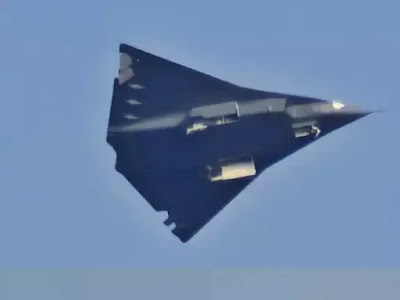‼️🚨🇨🇳 UPDATE China’s groundbreaking 6th gen stealth fighter takes flight: How it could be a 'super weapon' that could alter global power dynamics
‼️🚨🇨🇳 UPDATE China’s groundbreaking 6th gen stealth fighter takes flight: How it could be a 'super weapon' that could alter global power dynamics
The emergence of China’s new stealth fighter jet, believed to be a 6th-generation model, has caused a stir in military circles globally. The J-36, which made its first appearance in a video circulating on social media, was seen flying in broad daylight over Chengdu, Sichuan province. The aircraft's design and capabilities suggest it may represent a significant shift in aerial dominance, posing a potential threat to global military powers, especially in the Indo-Pacific region. |
Unconventional Design and Advanced Features
| The J-36 features a striking tailless triangular configuration, designed to significantly reduce its radar signature and enhance its stealth capabilities. This unique design allows it to potentially evade detection by conventional radar systems, making it harder to track and intercept. The jet's ability to fly at high altitudes over extended distances could give it the upper hand in operations far from its base, with a substantial reduction in reliance on tanker support. One of the most notable features of the J-36 is its three-engine configuration, believed to be powered by WS-10C turbofan engines. This configuration is designed for high-speed and high-altitude operations, enabling the aircraft to cover long ranges without the need for aerial refuelling. The larger size of the J-36 is also speculated to offer greater fuel capacity, increased payload, and more space for advanced weapons and sensors, making it suitable for a variety of combat and reconnaissance missions. |


Comments
Post a Comment